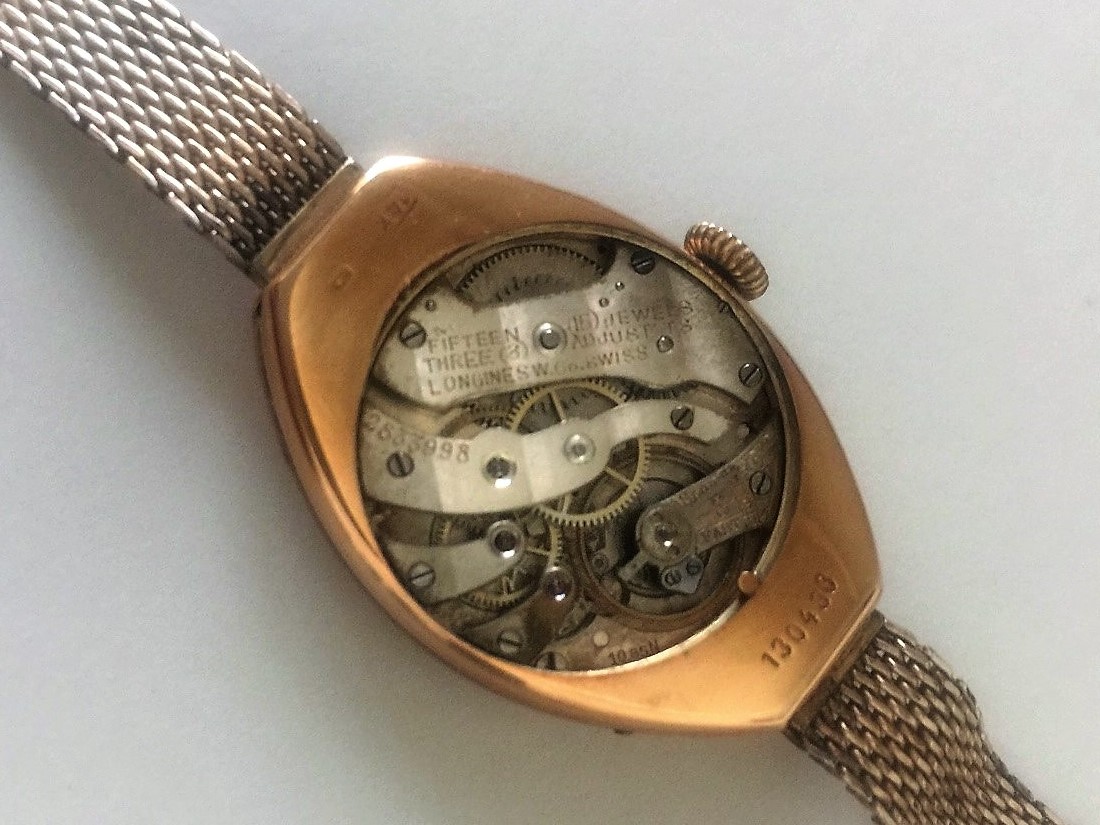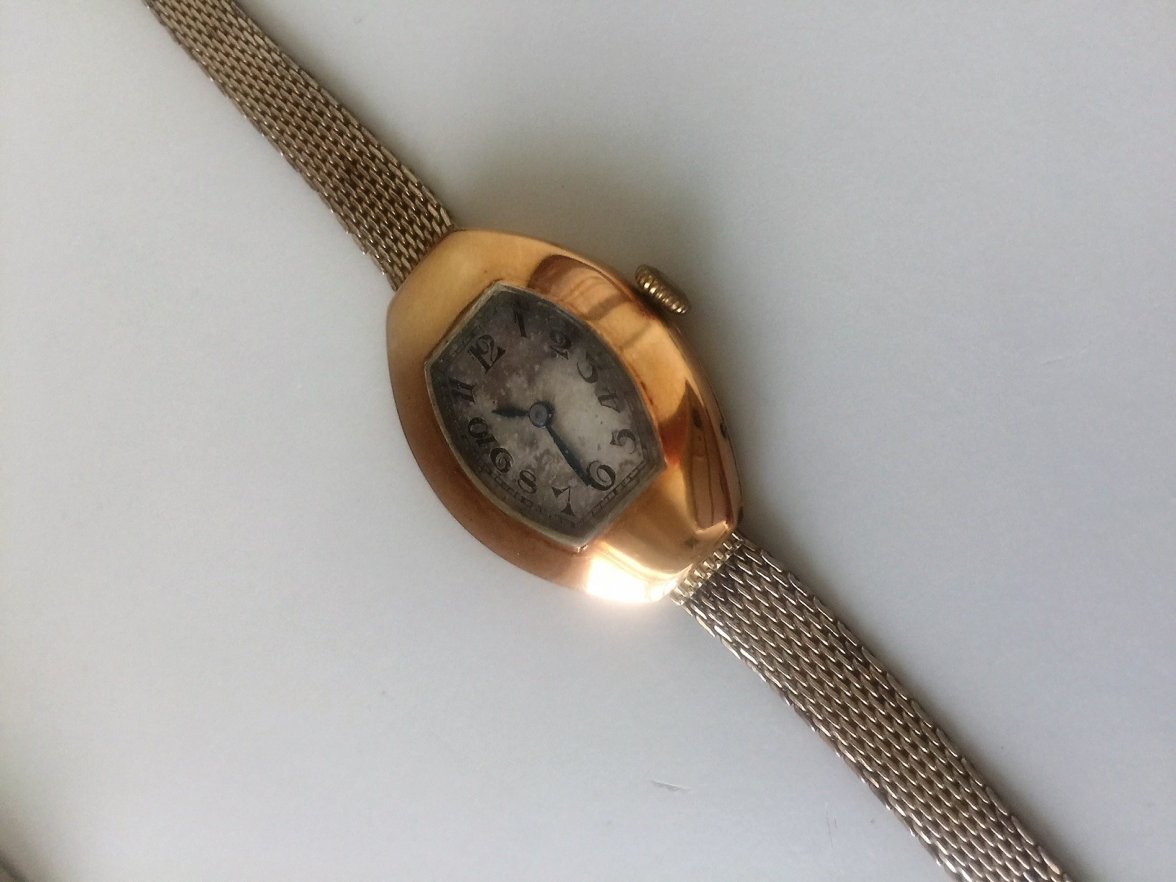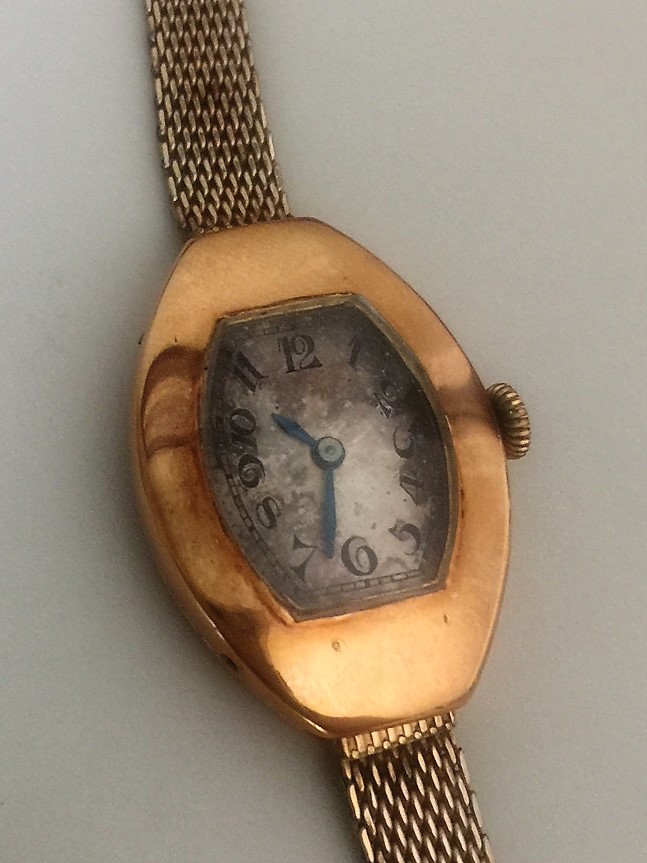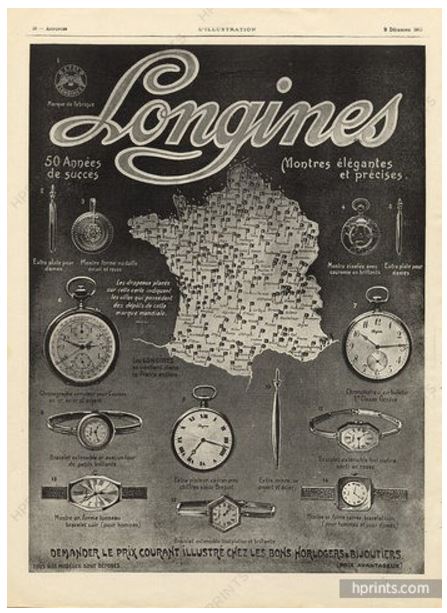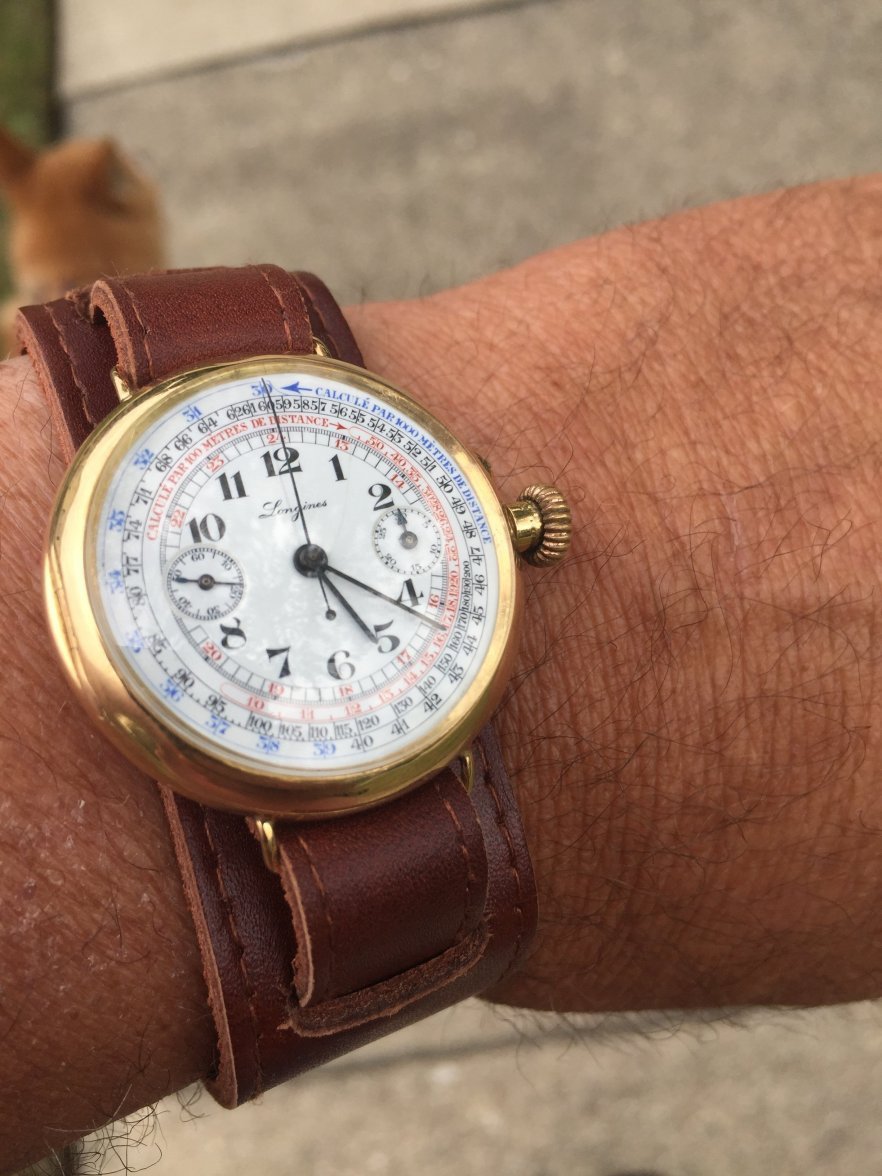JohnLy
·I was going through some watches I bought about 25-30 years ago for my wifeto see if they still run and whether I should send out to be serviced. I ran across this early Longines I purchased for her. When I first bought it the internet did not exist and never thought about contacting Longines to see if I could get an archive. Back then that was not very important.
It has a very low serial number (2833998) which dates it to 1912 - 1913. I don't know exactly when Longines started producing wrist watches but according to their web site it was 1913 and it was a caliber 13.33Z for a single button chronograph. Dial and movement are in rough condition but all original. Sorry for the picture quality took some quick ones with the IPhone.
Think I will contact Longines and see what they have to say about it, if anyone has any information would appreciate hearing from you.
It has a very low serial number (2833998) which dates it to 1912 - 1913. I don't know exactly when Longines started producing wrist watches but according to their web site it was 1913 and it was a caliber 13.33Z for a single button chronograph. Dial and movement are in rough condition but all original. Sorry for the picture quality took some quick ones with the IPhone.
Think I will contact Longines and see what they have to say about it, if anyone has any information would appreciate hearing from you.
